Backpacking Costa Rica: Your Ultimate Guide in 2021

Backpacking Costa Rica is a once in a lifetime experience. As a small country with a reliable bus system, it is easy to see much of the country in a short amount of time. As well, Costa Rica has a reputation for being one of the safer countries in Central America, making it an ideal place for a first time backpacker. The country is rife with natural beauty through beaches, rainforests, and animals, as well as full of adventure activities such as surfing, zip-lining, hiking, boating, and fishing. As someone who recently traveled to Costa Rica on a backpacking trip, let me be your up to date guide!
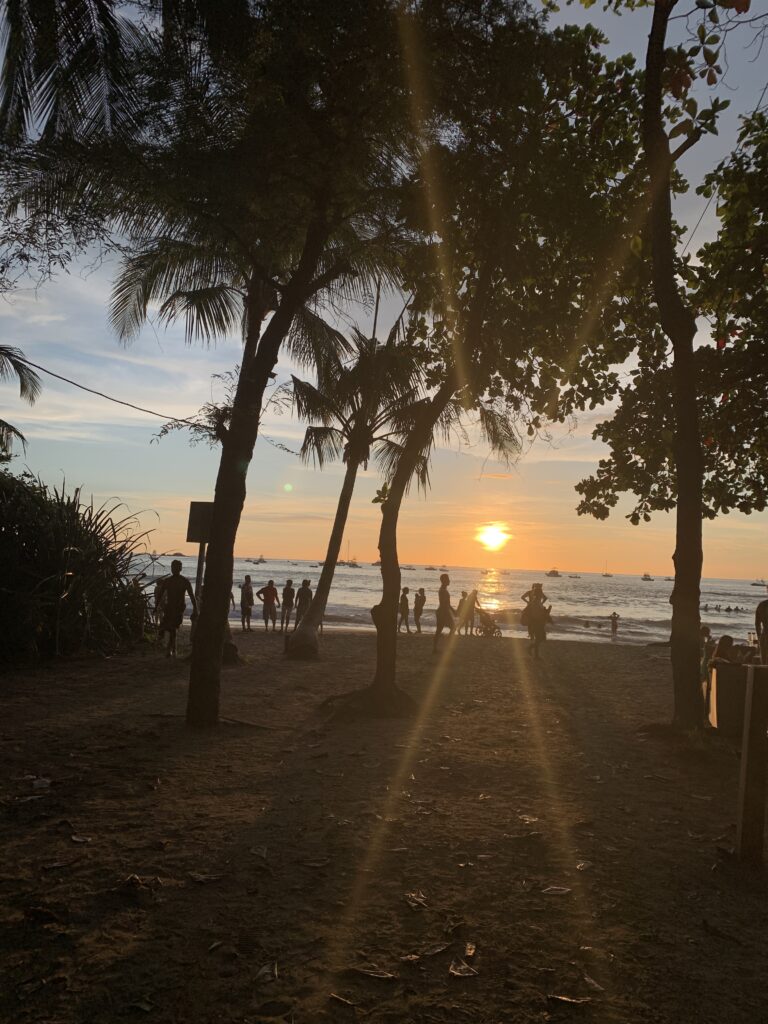
Why Backpack Across Costa Rica?
Why should you go backpacking in Costa Rica? Well, there are many reasons. As mentioned above, Costa Rica has a reputation for safety. I planned to backpack solo as a twenty-something female, but was joined by my partner at the last minute. That said, I met many solo backpackers who were having a great time!
Costa Rican’s are accustomed to tourists, and will be open to helping you however you need. The local economy relies heavily on tourism, and although there were quite a few busy tourist areas, the numbers are currently 30% of what they would be before the pandemic. 2021 is a great time to visit to avoid the crowds and enjoy cheaper prices.
The bus system in Costa Rica is safe, affordable and accessible, making it easy to travel all over the country without a car, and great for backpacking. At the time of writing, Costa Rica does not require proof of a negative covid test of vaccination to enter, and you don’t need to quarantine when you arrive. Keep up to date with the latest entry requirements here or on your embassy’s website.
For all of these reasons, Costa Rica is an excellent choice of country if you’re looking to backpack or travel solo for the first time.

Entering Costa Rica
What do you need to enter Costa Rica? Well, a valid passport, for sure. At time of writing, due to the pandemic, you need a few other things as well. Health insurance that covers the length of your stay and covid-related incidents is mandatory. The country has a few national insurance companies you can buy from, but Trawick is the cheaper go-to that meets all the requirements. Once you purchase the insurance you will fill out the Costa Rica health pass which will generate a unique QR code. You will show this code to authorities in the airport at your home country and upon arrival in Costa Rica. Note: an attendant in my departure airport tried to tell me that Trawick was NOT an accepted insurance policy, but I had done my research and assured her that it was. Stick up for yourself if something like this happens to you, and always know your entry requirements!
You will also need proof of exit from Costa Rica. This means an exit flight or bus ticket. Authorities will ask to see it to make sure you aren’t planning on overstaying the maximum 90 day tourist allowance.
Buy a SIM Card for your Phone
Unless you have a phone plan with roaming and international usage, make sure you buy a SIM card for you phone as soon as you arrive in Costa Rica. The SIM card (or chip, as it is known locally) is cheap, and the plans are too. You can extend the plan or add data easily at almost every corner store and grocery. The data plans will include free WhatsApp usage, and many local businesses use this app as well.
If you fly into Liberia, there is no place within the airport to buy a SIM card. Take a bus or taxi from the airport to the town of Liberia, and go to a grocery store. I went to Peri Liberia to buy my card. There is a kiosk to the right of the entrance where an attendant will help set up your plan and install your card.
There are three options for a phone plan: Movistar, Claro and Kolbi. In June 2021, Kolbi seemed to be down, and I was only offered the previous two options. Both have slightly different coverage. I chose Claro while my partner chose Movistar, and sometimes only one of us would have a signal depending on where we were in the country.
If you fly into San Jose, there is a Claro stand left of the baggage claim five where you can purchase a SIM card. It is open from 6 AM to 11 PM (this information was last checked March 2021).
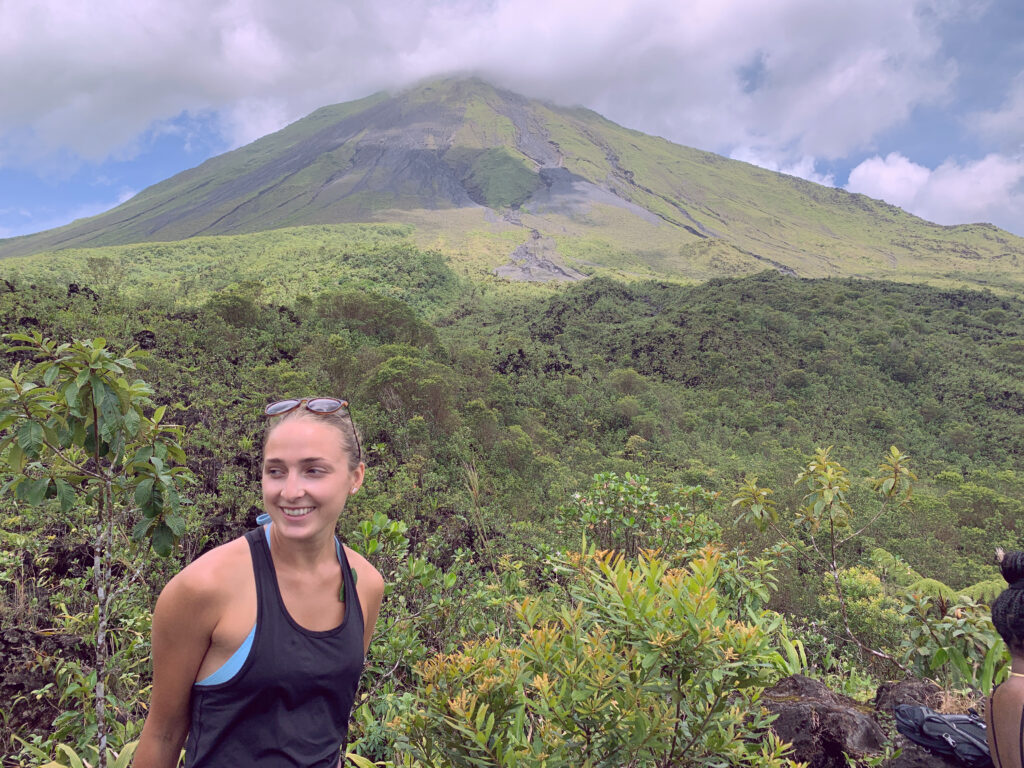
Taking the Public Bus
The bus system in Costa Rica is extensive and easy to use. With a little planning ahead of time, you will save a lot of money and headache on your backpacking journey. Some great resources for checking routes are this Facebook group and this website. This is another website being built that I referenced several times while abroad.
First, plan your route. Scroll down for information specific to towns you may want to visit. I actually planned my route by choosing a few places that sounded interesting, then seeing if they were accessible by public bus. I would go back and forth tweaking locations until the route made sense for me!
Bookmark, screenshot or write down the bus routes you will need. In Costa Rica, every area of the country has different countries running the public bus – there is no national bus company. When you’re in a town with multiple routes leaving from it, such as San Jose, there will be different bus stations for each company/bus route.
When waiting for your bus at the correct station, check for a ticket booth or Boleteria. If this exists, go here and ask to buy a ticket (Tamarindo will be replaced by the area you’re going to): “Quiero pagar un boleto a Tamarindo por favor.” The price may be posted, or the attendant can show you the numbers on a calculator if you don’t understand Spanish well. Prices range from $3-$16 USD depending on the route. Use local Colones currency if you can.
If there is no boleteria, it means you have to pay the bus driver when you board the bus. Usually this is the case. It’s best to have exact change or use small bills.
The only bus route I ever needed to purchase a ticket ahead of time was Puerto Viejo de Talamanca to San Jose. In this case, there’s a boleteria in the town where you can purchase your tickets a few days in advance (or when you first arrive in Puerto Viejo). This was also the only route that had assigned seating.
In June and July 2021, people wore masks while riding the bus. Some routes were very empty, while others were sold out. If you have a large backpack or luggage, you will be asked to place it in the carrier bins underneath the bus. Because of this, make sure all your valuables and electronics are in a smaller carry on bag. You may want to sit on the side of the bus with the carrier bin to keep an eye on anyone accessing the bins, although this was never a problem for me.
Usually there is no A/C on buses. Make sure you use the restroom before your journey, and bring water to stay hydrated. Note that many restrooms in bus stations will charge you 200-800 colones to use.
A great tip I discovered when backpacking Costa Rica was to locate the local bus station the day before I left an area. For example, if I was staying in a town for 3 days, I would walk to the station or bus stop the day before. This is where you will likely find the most up to date route information. Because of covid, many routes were cancelled or changed. The companies don’t always update their website or Facebook page with the changes. You will also find out how long is takes to travel from your accommodation to the bus stop, and possible how much the ride costs.
Using Colones, The Most Beautiful Notes
Costa Rica is fairly Americanized, and almost all places will accept USD as currency. That said, you should convert your cash to colones and familiarize yourself with the beautifully colourful currency. If you use USD to pay, you likely will be ripped off, as the vendor can use whatever exchange rate they like. Tours are often listed in USD, but you can ask to pay in colones instead.
Download an app called XE to check current currency conversions. As a Canadian, I discovered a way to convert CRC to CDN mentally using this easy method:
Take the amount in CRC and multiply it by 2. Then remove three decimal points. The remaining is a close estimate of the amount in CDN. For example: $5,000 CRC x 2 = $10,000 CRC. Remove 3 decimal points = $10. So, $5,000 CRC = $10 CDN.
The large numbers used in colones can be daunting, but this was an easy trick to convert on the fly. After converting CDN, it may be easier to convert to USD. Or, you can take the amount in colones and multiply it by 0.0016 on your phone. For example: $5,000 CRC x 0.0016 = $8. So, $5,000 CRC = $8 USD.

What Areas Should I Travel To?
What areas you choose to visit in Costa Rica depends on two things: the length of your trip and what activities you like. Make sure you fly into the airport that makes the most geographical sense for your itinerary.
If you love being lazy on the beach, surfing, and a drier climate, go to the Pacific Coast.
If you like a more humid climate, partying, cannabis and Jamaican influence, go to the Caribbean Coast.
If you like adventures such as zip-lining, lush rainforest and a cooler climate, go inland to the North/Central Valley.
That being said, I had 3.5 weeks in Costa Rica, which was more than enough time to travel through all these areas. If you only have a week or less, stick to one area.

Pacific Coast
On the Pacific Coast, I travelled the following: Liberia – Playa Del Coco – Tamarindo – Montezuma – Santa Teresa -Paquera. Liberia is the airport to arrive in if you plan to frequent the Pacific side.
On the Pacific side, or the Guanacaste Province, I spent time on gorgeous white sand beaches, took a catamaran ride in Tamarindo, rented an ATV to get around Montezuma, was smashed by waves in Santa Teresa, and saw bioluminescence in Paquera. Don’t forget your sun hat!
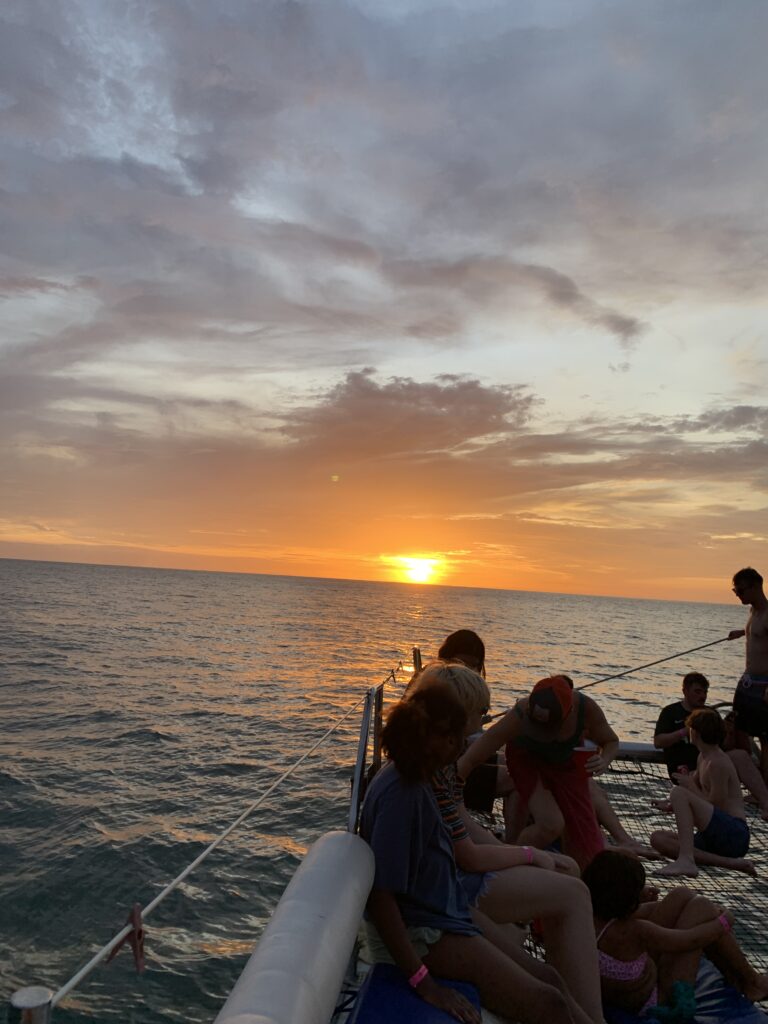
Caribbean Coast
On the Caribbean Coast, I travelled to Puerto Viejo and Cahuita. You will want to fly into San Jose if visiting the Caribbean.
On this side of Costa Rica, I rented a beach cruiser bicycle to get around Puerto Viejo and Cahuita, walked on a black sand beach and drank the best coffee ever.
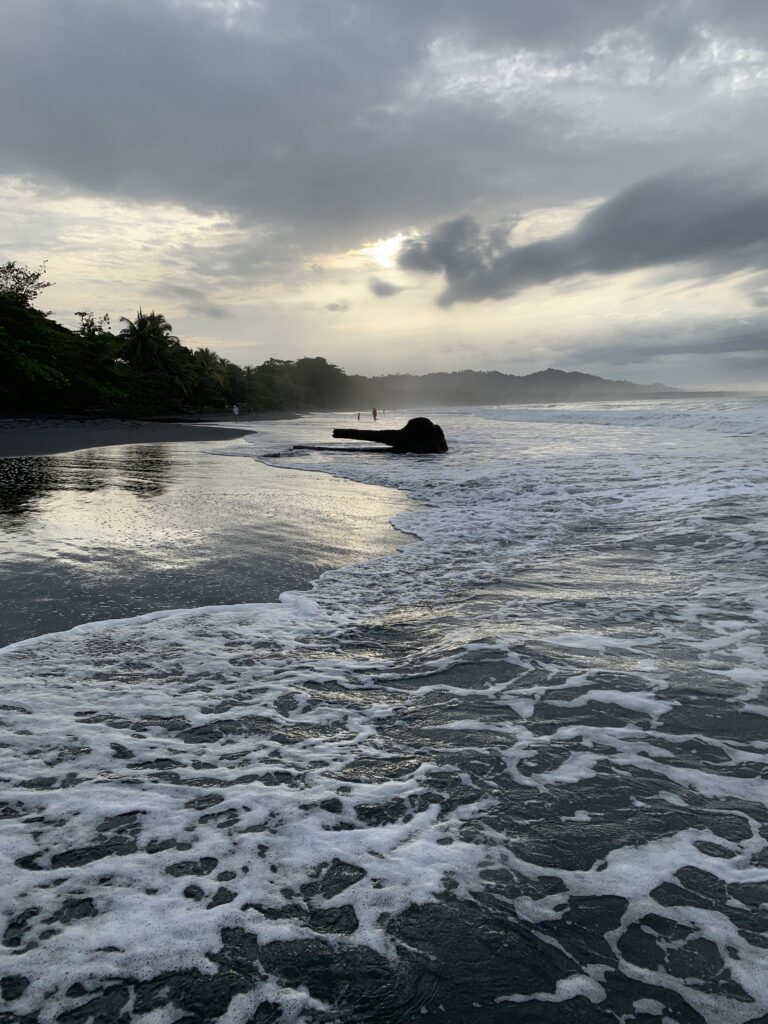
Northern Inland and Central Valley
In the inland areas, I travelled the following: Santa Elena/Monteverde – La Fortuna – Quesada – Alajuela – San Jose. You may fly into either Liberia or San Jose, depending on your first destination in the Central Valley.
In Central Valley I bird watched from my bungalow in Santa Elena, hiked in the jungle to the base of the Arenal volcano, swam in three different bodies of water in one day including a waterfall, lagoon and hot spring.
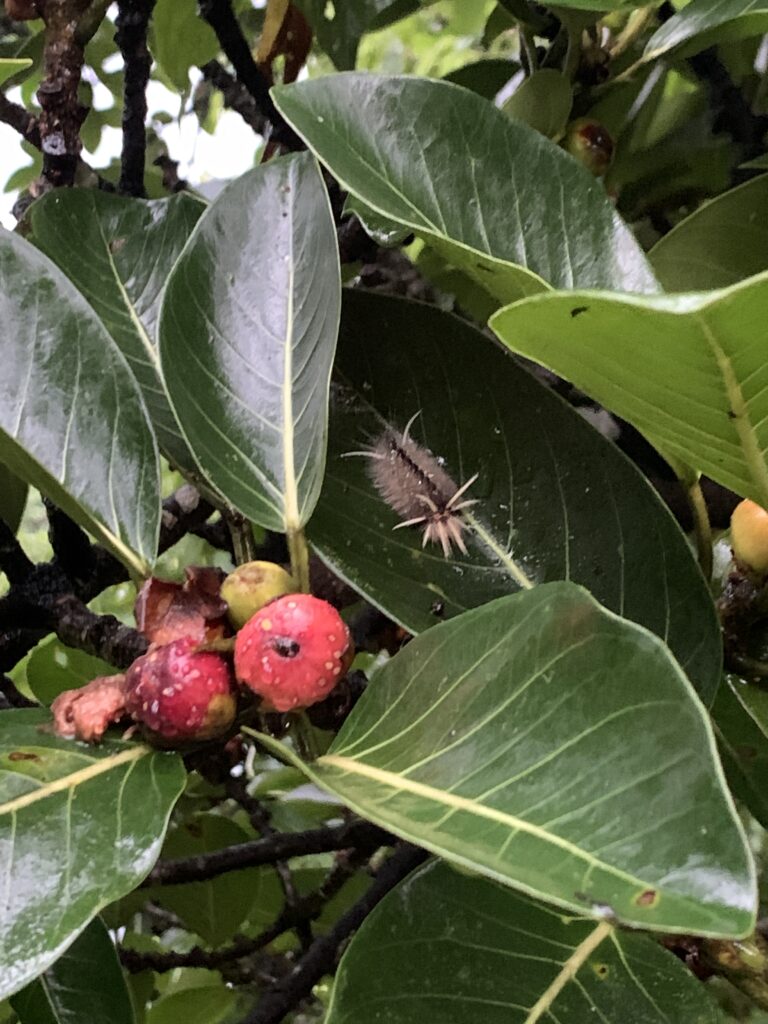
And… You’re Off!
You’re all set for your trip to Costa Rica! If you have any questions or comments, please leave them below. I will respond to you promptly. Have you already travelled to Costa Rica? Let me know how your own experience was in the green country. Pura Vida!

Wow what an amazing and insightful post! Thanks for the great advice, I am a huge fan and eagerly wait for every new post! Keep it up!